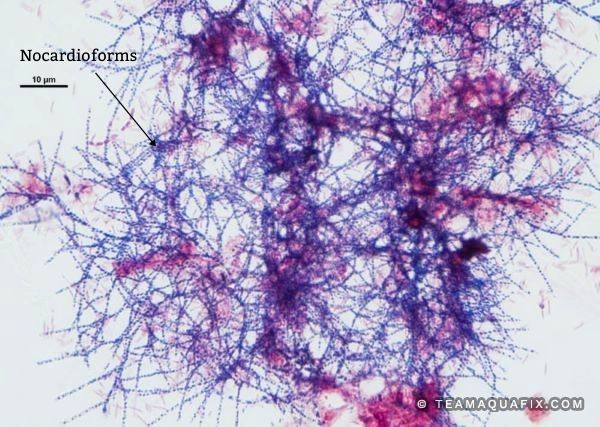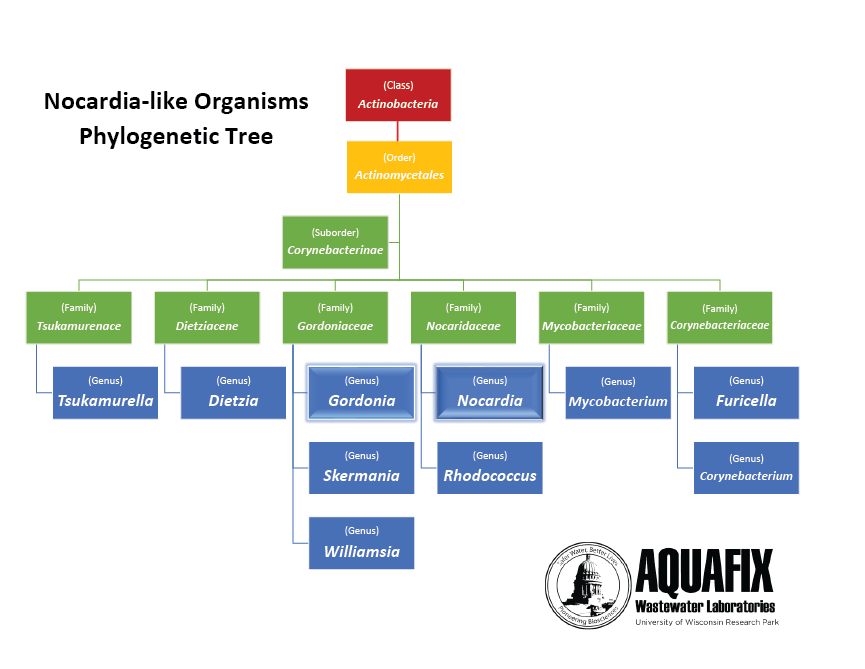
Nocardioforms vs Nocardia Like Organisms
by Aquafix Microscopist, Natalie Walton.
We like to stay up to date with what is going on in wastewater microbiology. During one of our research projects, we discovered that “Nocardioforms” is an outdated term. When the Nocardioform classification was being developed, technology wasn’t advanced enough to understand the true diversity of filaments that would fall under this classification. However, now we do. This phylogenetic tree shows just how broad of a term Nocardioforms is.
Gordoniaceae and Nocardaceae are the most common filament families with true branching observed in wastewater. However, they cannot be differentiated through light microscopy alone, and therefore, are often used interchangeably. These families can only be distinguished through 16 rRNA sequencing which is not a common practice in wastewater filament identification. Sequencing is not a common practice to differentiate these filaments as they have an 89% to 98% similarity in DNA, thrive in similar conditions, and cause the same issues. Therefore, these filaments can be treated in the same manner, making sequencing unnecessary in basic wastewater identification. So, these filaments are now being referred to as Nocardia-like Organisms or NALO as a blanket term.
Referring to these filaments as NALO instead of Nocardioforms is important as NALO only include the genuses with true branching. Distinguishing this feature is important as true branching is specific to NALO, no other commonly observed wastewater filament has it. Therefore, true branching is used as one of the key characteristics in identifying NALO.
Referring to these filaments as NALO instead of Nocardioforms is important as NALO only include the genuses with true branching. Distinguishing this feature is important as true branching is specific to NALO, no other commonly observed wastewater filament has it. Therefore, true branching is used as one of the key characteristics in identifying NALO.


